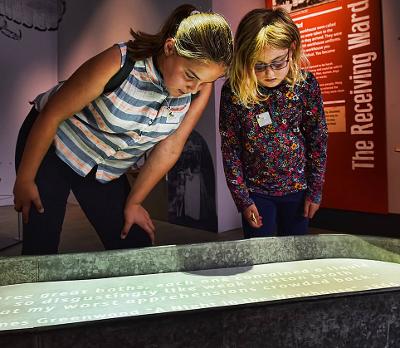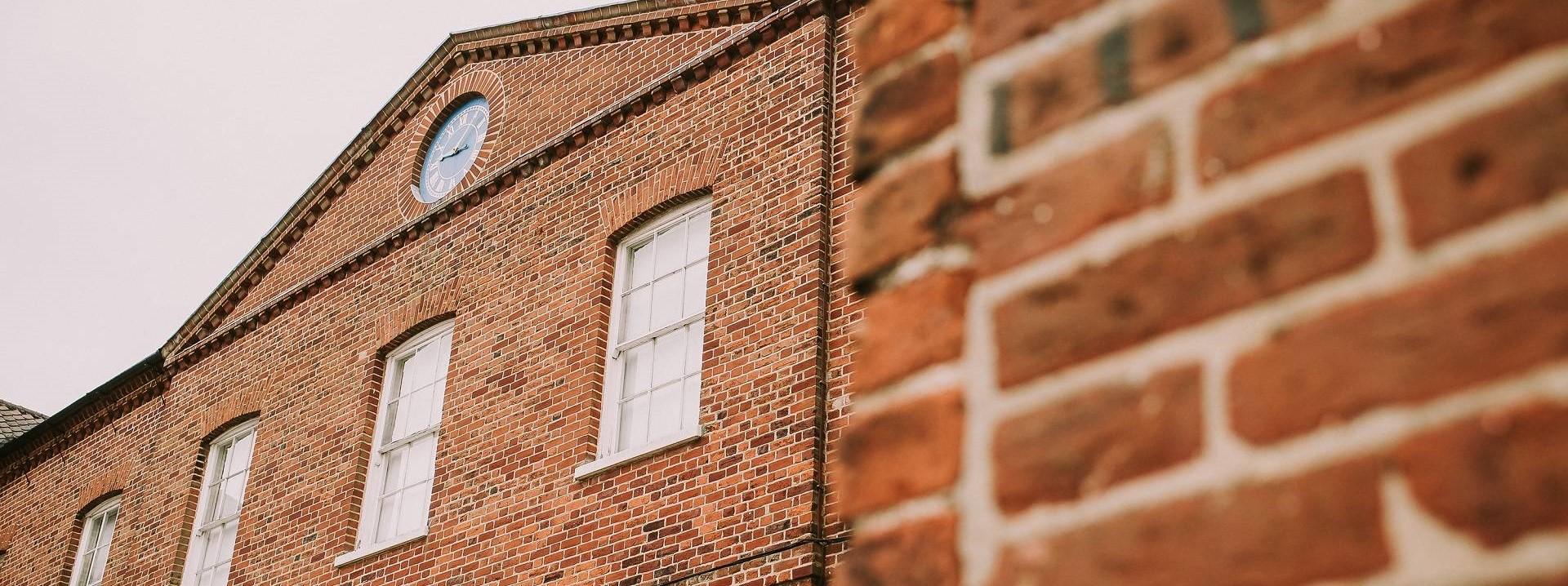Learn about the workhouse museum at Gressenhall Farm and Workhouse
Stand in the evocative workhouse settings, face to face with projections of staff and inmates who once walked these whitewashed corridors.

Gressenhall Farm and Workhouse is based in a former workhouse, originally opened in 1777 as a 'House of Industry'. Now the site houses an extensive museum exploring what life was like for those who once lived and worked here.
The museum allows you to stand in an evocative workhouse setting, face to face with projections of staff and inmates, and listen to the first-hand stories, often tragic, but also inspirational, from the people who once walked these whitewashed corridors.
A combination of projections, archives, and fascinating collections (the largest workhouse collection in the country!) help tell the real stories of the workhouse staff and inmates. The displays focus on true stories from the building's past, many of which only came to light during the research phase of the recent re-development project, Voices from the Workhouse. Stories like those of Harriet Kettle and Christopher High, breathe life into the historic archives giving you a vivid insight into what life was like in Victorian Britain.
As well, discover what life was like under the regime of the workhouse clock, what food was served and the different classes of inmates. Explore what work inmates had to do and visit the refractory cell (known as 'the dungeon') where inmates were sent if they broke the rules.
To learn more about the history of our fascinating building prior to your visit, find out more about the history of Gressenhall.
The yards
Step into the workhouse yards where the daily tasks were completed by the workhouse inmates. Able bodied men could spend eight to nine hours a day outside.
The wall of the boys' yard contains many examples of inmate's names scratched into the soft Norfolk Red brick. The boys could play in their yard and there are records that the guardians installed a swing within this space.
The laundry
Female inmates did the washing in the laundry. There were many young, elderly and sick inmates so there would have been a lot of washing to do.
The museum's engineering volunteers have helped to restore the steam powered laundry. The washing machines had not been used since the building was a County Care Home, known as Beech House. Discover more about this era of the building's history within this space.
The school room
The school room is set out like a Victorian village school. The desks were collected from Norfolk schools and were used between the 1870s and the 1980s. During the Workhouse period, the room was used as the girls' school room. All workhouse children went to school. They were taught reading, writing and arithmetic. They also learnt religious studies, history and geography. A good education helped children find work. It was hoped that they would leave the workhouse and not return.
People of the past
Christopher High was a farm labourer from Whissonsett. He lived with his wife and seven children in a tiny cottage with only two rooms. The whole family slept in a bedroom nine feet wide by seven feet long. This entire cottage has been recreated in the museum.
In 1864 Christopher High's wife died. He could not look after his children and work at the same time, so the youngest children were ordered to enter the workhouse. It was agreed that Christopher and his eldest son could stay outside so that they could work to earn money. This helped to pay for the children's care in the workhouse.
The sculptures in the front courtyard show Christopher leaving his children at this workhouse. After two months Christopher was able to take his children home. A charity provided them with proper beds and clothing. The faces of the sculptures are based upon photographs supplied by descendants of the High family.





